Articles
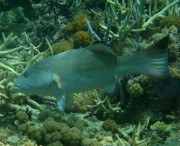
No-take marine reserves (NTMRs) are widely advocated for conserving exploited fish stocks and biodiversity. Research investigating the effects of the 2004 rezoning of the Great Barrier Reef Marine Park (Emslie et al, 2015) showed that expanding NTMR networks had clear benefits for fishery target, but not non-target, species. A cyclone caused widespread degradation, but target species biomass was retained within NTMRs, with greater recovery potential.

It will be no surprise to anyone who has visited the Wet Tropics World Heritage Area (WTWHA) that both visitors and the local Queenslanders love the place. The region is famous for its wildlife, biodiversity and natural beauty. Exactly how much we love it, and what in particular we love about it, is being studied by researchers at JCU. They found safety and being able to access quality infrastructures to be the most important factors, no matter who you are, or where you come from.
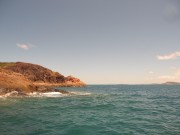
It’s a classic conservation planning problem. There are hundreds of islands within the Great Barrier Reef World Heritage Area with ecological values of national and international significance. Serious threats to those values are posed by invasive plants and animals, and there are limited people and money to manage the threats. How should the conservation dollar be spent?
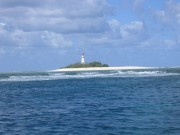
The coral reef islands on the southern GBR are a great place to start a family. But after the nesting season is over many of the animals that breed on the islands, swim or fly far away. Tracking devices on turtles and seabirds that nest in the region around Heron Island on the southern Great Barrier Reef (GBR) are recording the journeys of the animals as they travel across the ocean.
Within a funding structure such as NERP TE, 'governance' is often described within the narrow framework of program roles and responsibilities. However there are benefits of considering the broader system of governance that such programs sit in, and in ensuring that each phase within the program cycle contributes to good governance outcomes. This broader idea of governance represents "the way society gets things done".


There is an updated version of the details of this part of the MMP monitoring program.
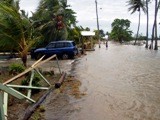
This report provides a synthesis of research on climate change and coastal science in the Torres Strait, and has been produced for the Australian Government’s Marine and Tropical Sciences Research Facility (MTSRF). It identifies and summarises work to date on reef evolution, hydrodynamics and sedimentary environments throughout the Torres Strait. It describes the island dynamics at Boigu, Saibai, Masig, Poruma, Warraber and Iama Islands. Numerous studies relating to climatic change are reviewed and the most relevant regional predictions for climate change in the Torres Strait are presented. The potential physical and ecological impacts of these changes in the Torres Strait are also identified. Adaptation and mitigation measures are suggested and their outcomes and consequences are evaluated. The key principles from sustainable land use plans on the islands are summarised and knowledge gaps in the fields of both coastal and climatic science are identified to guide future research.

This page shows the extent of the flood plumes of the Fitzroy, Burnett, Mary and Brisbane Rivers caused by the extensive flooding that occurred in Queensland in December 2010 and January 2011. These flood plume maps were produced as part of the Reef Rescue Marine Monitoring Program - Assessment of terrestrial run-off entering the Great Barrier Reef project by James Cook University (contact Michelle Devlin). They were based on visual inspection of NASA MODIS satellite images and were created for days where the cloud cover was low enough to see the boundary of the plumes.
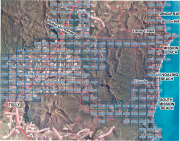
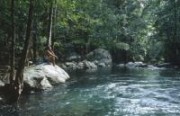
The need to develop a comprehensive understanding of the role that protected areas play in the lives of communities is as important as developing a greater understanding of the scientific aspects of protected areas. The aim here was to monitor the attitudes, perceptions, knowledge and use of the Wet Tropics World Heritage Area (WTWHA) by residents of the Wet Tropics bioregion. The research builds on previous community attitude surveys that have been undertaken for the Wet Tropics Management Authority (WTMA).
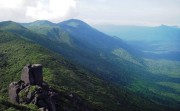
Researchers from the Centre for Tropical Biodiversity and Climate Change at James Cook University (funded by the Marine and Tropical Sciences Research Facility), are working to identify climate refugia that could promote adaptation to climate change in rainforest species of Australia’s Wet Tropics. Major priorities are to identify existing refugia not currently included in the protected area network, along with sites where land degradation could potentially be reversed to strengthen refugia.
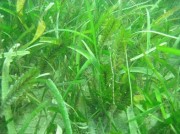
The aims of this work (MTSRF Project 1.1.3b) were to identify the role of light and water temperature as drivers of change in seagrass meadows of the northern Great Barrier Reef. Experimental approaches as well as field investigations were undertaken.
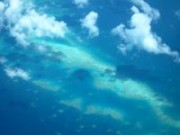
One of the key ways to ensure the sustainability of a tourism destination is to measure and build its competitiveness. Success is achieved when the destination is able to achieve the highest level of well-being for its residents on a sustainable basis (Ritchie and Crouch 2000). Destinations that do not evaluate themselves and their competitors will often encounter difficulties in the long run as markets change and the demand for destination goods and services evolves under the influence of technology and changing consumer preferences.
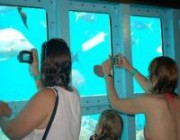
This annual report forms part of a series of reports presented by James Cook University on reef tourism in the Great Barrier Reef. It is part of a research program being conducted under the Australian Government’s Marine and Tropical Sciences Research Facility (MTSRF). The research described here falls under MTSRF’s research program to identify sustainable use and management of marine resources of the Great Barrier Reef and specifically the analysis of tourism use and impact on the Great Barrier Reef for managing sustainable tourism.
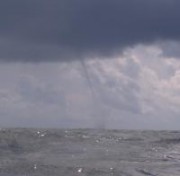
As one of Australia’s iconic tourism attractions and one of the seven natural wonders of the world, the Great Barrier Reef (GBR) is an important economic, social and natural resource for Queensland’s Tropical North. However, the long-term prognosis for the health of the reef and by implication, the industries dependent on it, is not positive. So far much attention has focussed on the health and resilience of the reef ecosystem, as a foundation for a resilient tourism industry.
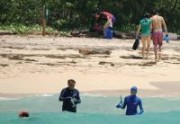
Marketed internationally as an iconic tourism experience, Australia’s Great Barrier Reef (GBR) faces a range of issues similar to those faced by coral reefs in other parts of the world. According to the Great Barrier Reef Marine Park Authority (GRBMPA), the management body responsible for the reef, 1.9 million tourists visit the reef annually, using marine tour operators that offer a wide range of tour products. Management of the tourism industry is based on a zoning system that requires natural and social science input.
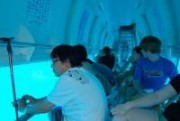
Marine wildlife tourism has become one of the fastest growing tourism sectors. In the context of the Great Barrier Reef, it focuses on five types of activities: (i) “swim-with” programs, (ii) surface watching activities (whales and dolphins); (iii) diving (corals, sharks, etc), (iv) reef snorkeling trips and (v) glass bottom boat tours. It is proposed that management, product design and experience, and outcome will be different for each of these and not all findings within marine wildlife tourism are transferable between tourism types.
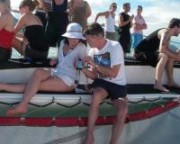
Photography is an important element of the tourist experience and provides both a method of later reliving the experiences of the journey as well as sharing elements of the journey with others. In the digital age photography has taken on a new dimension with the ability of people to enhance images as well as share them with others via new media such as social network sites and blogs. This paper reports on research undertaken in to photography on the Great Barrier Reef and finds that respondents rate the need for good photographic images as a high priority.



